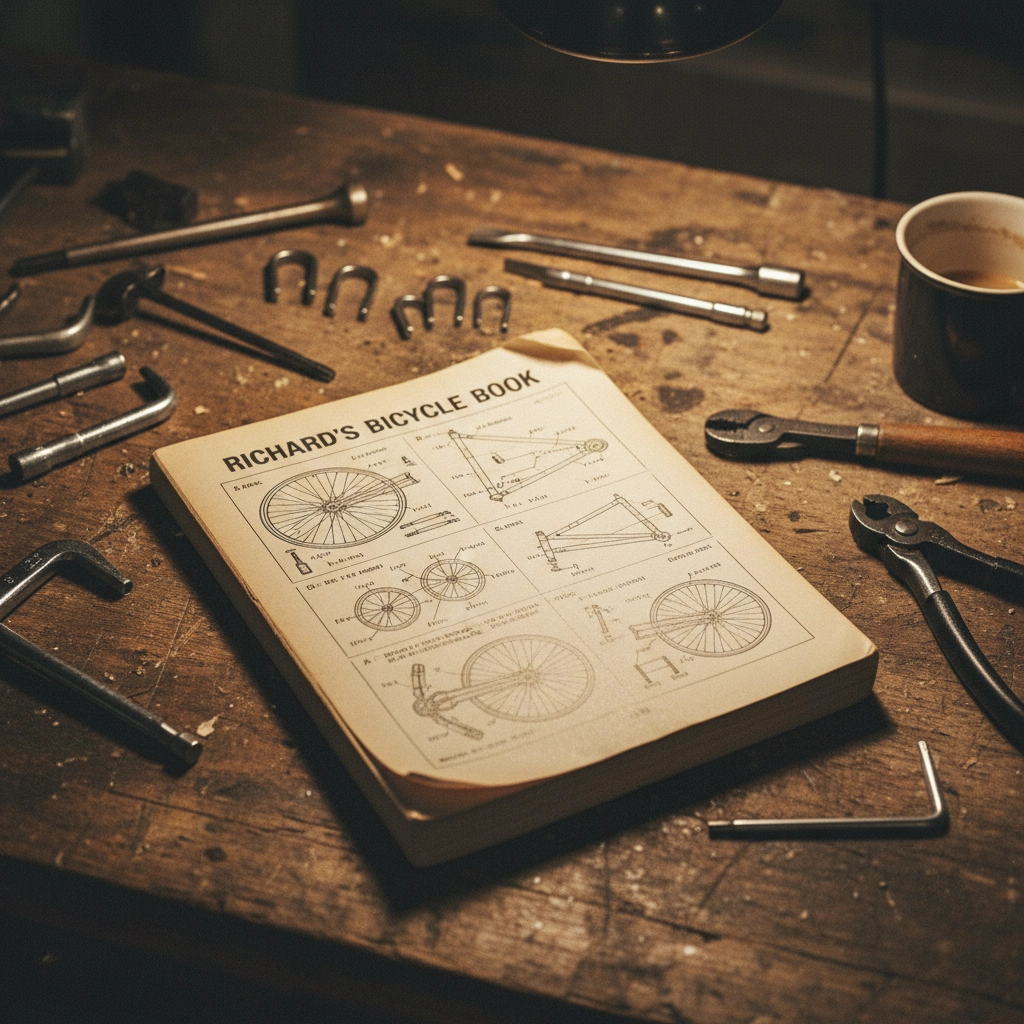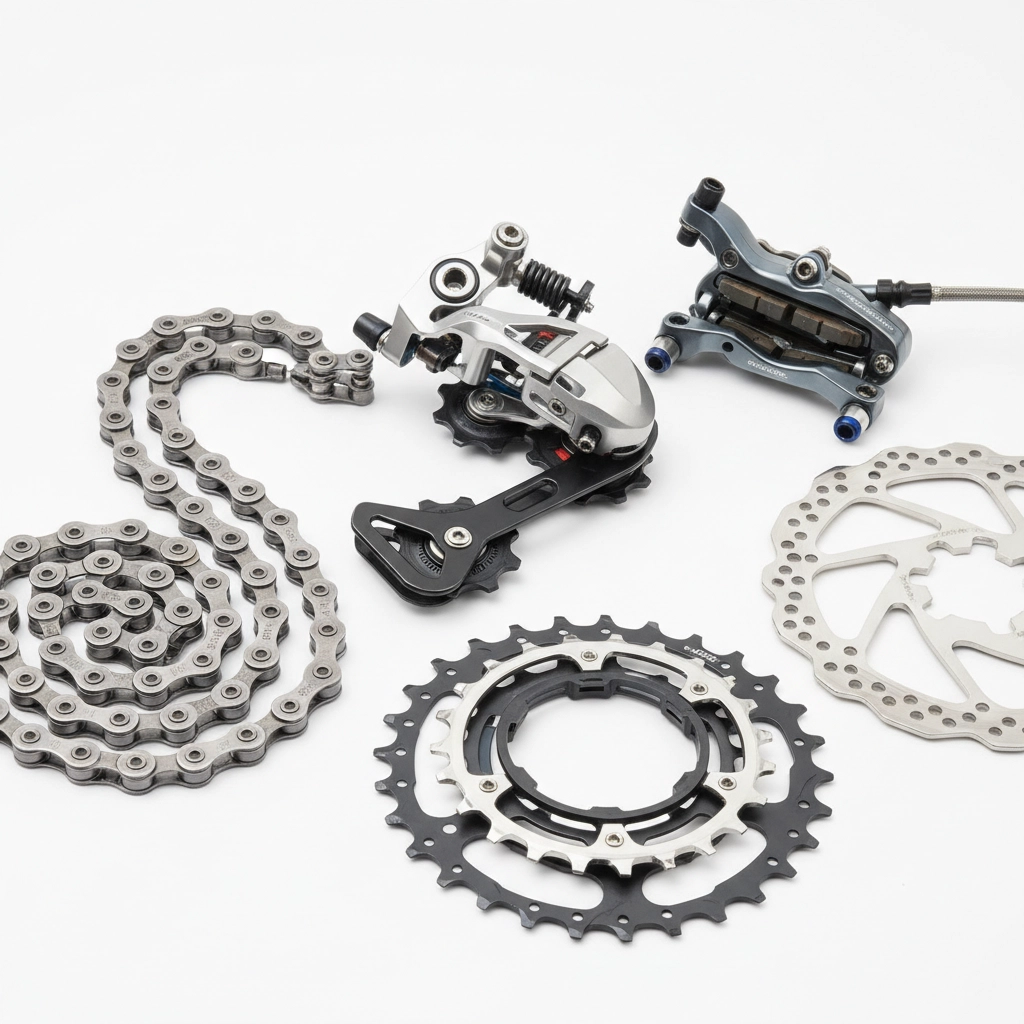How Reading Richard's Bicycle Book Started a Lifelong Love of Bikes, Parts & Mechanics
Posted by Tony Childs on

You know how some people can pinpoint the exact moment their life changed? For me, it was a rainy Tuesday afternoon in 1980 when I picked up a copy of Richard Ballantine's "Richard's Bicycle Book" from WH Smith. I was fourteen years old, bored out of my mind, and had no idea that this quirky little book would set me on a path that would eventually lead to repairing bikes at GC Bike Repairs.
The Book That Changed Everything
Back then, cycling wasn't the trendy thing it is today. BMX was just starting to catch on, and most adults saw bikes as toys rather than serious transportation. But Ballantine's book was different – it treated bicycles like the magnificent machines they truly are. From the very first page, his infectious enthusiasm jumped off the paper and grabbed me by the collar.
The book wasn't just a manual; it was a love letter to cycling. Ballantine wrote with this brilliant mix of technical knowledge and cheeky humor that made even the most complex mechanical concepts feel approachable. He'd explain gear ratios one minute, then launch into a passionate rant about cyclists' rights on the road the next. It was unlike anything I'd ever read.

What really hooked me was his chapter on bicycle maintenance. Up until that point, when something went wrong with my bike, I'd just take it to the local shop and hope for the best. But Ballantine made it clear that understanding your bike – really understanding it – was part of the joy of cycling. He wrote about the satisfaction of hearing a perfectly adjusted derailleur click smoothly through the gears, or the pride that comes from truing a wobbly wheel yourself.
Down the Rabbit Hole
That book became my bible. I carried it everywhere, pages getting more worn and margins filled with my own notes and observations.
I started seeing bicycles differently. Every component became fascinating – the elegant simplicity of a chain drive, the ingenious mechanics of a derailleur, the precision engineering of a headset. I'd spend hours in bike shops, not looking to buy anything, just studying how different manufacturers approached the same mechanical challenges.

My friends thought I'd gone a bit mad. While they were collecting football cards, I was memorizing the differences between Shimano and Campagnolo components. I knew the gear inch calculations for every bike in our neighborhood and could spot a poorly adjusted brake cable from fifty feet away.
From Theory to Practice
Ballantine didn't just teach theory – he encouraged readers to get their hands dirty. The book included detailed illustrations of how to perform basic maintenance, and more importantly, it gave you the confidence to try. His philosophy was simple: bikes are meant to be understood and worked on by their riders, not shrouded in mystery by mechanics trying to make a quick buck.
I started small – adjusting my own brake cables, cleaning and lubing my chain properly, learning to true wheels on an old bike stand I cobbled together in our garage. Each successful repair felt like a victory, and each mistake became a learning opportunity. Ballantine had taught me that making mistakes was part of the process, as long as you learned from them.
The Community Connection
One of the things that struck me most about the book was how Ballantine painted cycling as something bigger than just getting from A to B. He wrote about the cycling community – how cyclists looked out for each other, shared knowledge freely, and celebrated the simple joy of human-powered transportation.
This really resonated with me. I started seeking out other cycling enthusiasts, joining local rides when I got older, and discovering that Ballantine was right – there was something special about the cycling community. People were generous with their knowledge and genuinely excited to help newcomers fall in love with bikes the way they had.

The Technical Foundation
What made Ballantine's book so special wasn't just the passion – it was the solid technical foundation he provided. The book covered everything from basic physics principles to advanced mechanical concepts, all explained in accessible language. He didn't talk down to readers or assume they couldn't handle complex information.
I learned about frame geometry and how it affects handling. I discovered the relationship between wheel size, gear ratios, and cadence. Most importantly, I began to understand that every component on a bicycle was there for a reason, and that small adjustments could make huge differences in how a bike performed.
This technical knowledge became the foundation for everything I'd do later. When I eventually started working on other people's bikes, I wasn't just following rote procedures – I understood the principles behind what I was doing.
From Hobby to Obsession to Career
As the years went by, my collection of bikes grew, and so did my workshop. What started as basic maintenance evolved into full restorations, custom builds, and eventually helping friends and neighbors with their cycling problems. Word spread that I was the guy who could fix any bike issue, no matter how obscure.
Looking back, I can trace it all back to that first encounter with Ballantine's book. It didn't just teach me about bikes – it taught me to approach problems methodically, to value quality craftsmanship, and to never stop learning. These became the core values that eventually shaped GC Bike Repairs.
The Legacy Lives On
Even though Richard Ballantine passed away in 2013, his influence on cycling culture continues. That little book from 1972 sold over a million copies and created countless cycling enthusiasts just like me. It proved that you didn't need flashy marketing or expensive equipment to fall in love with cycling – you just needed someone passionate enough to share their knowledge and enthusiasm.

Every time I help a customer understand how their bike works, or watch someone's face light up when they successfully complete their first chain replacement, I think about Ballantine's book. He showed me that the best way to grow the cycling community isn't through intimidation or mystification – it's through education and encouragement.
Full Circle
These days, when young cyclists come into the shop asking questions about bike maintenance, I often recommend they track down a copy of "Richard's Bicycle Book." Sure, some of the specific product recommendations are outdated now, but the core philosophy remains as relevant as ever: bicycles are beautiful, logical machines that reward understanding with years of reliable service and pure joy.
That fourteen-year-old kid who picked up a random book on a rainy afternoon never could have imagined where it would lead. But I'm grateful every day for that moment of curiosity, and for Richard Ballantine's decision to share his passion with the world. It's a reminder that you never know when the right book, at the right moment, might just change your entire life.
If you're curious about diving deeper into bike mechanics yourself, pop by the shop – we love to chat about the wonderful world of bicycle engineering. After all, sharing knowledge is what keeps the cycling community rolling forward.
